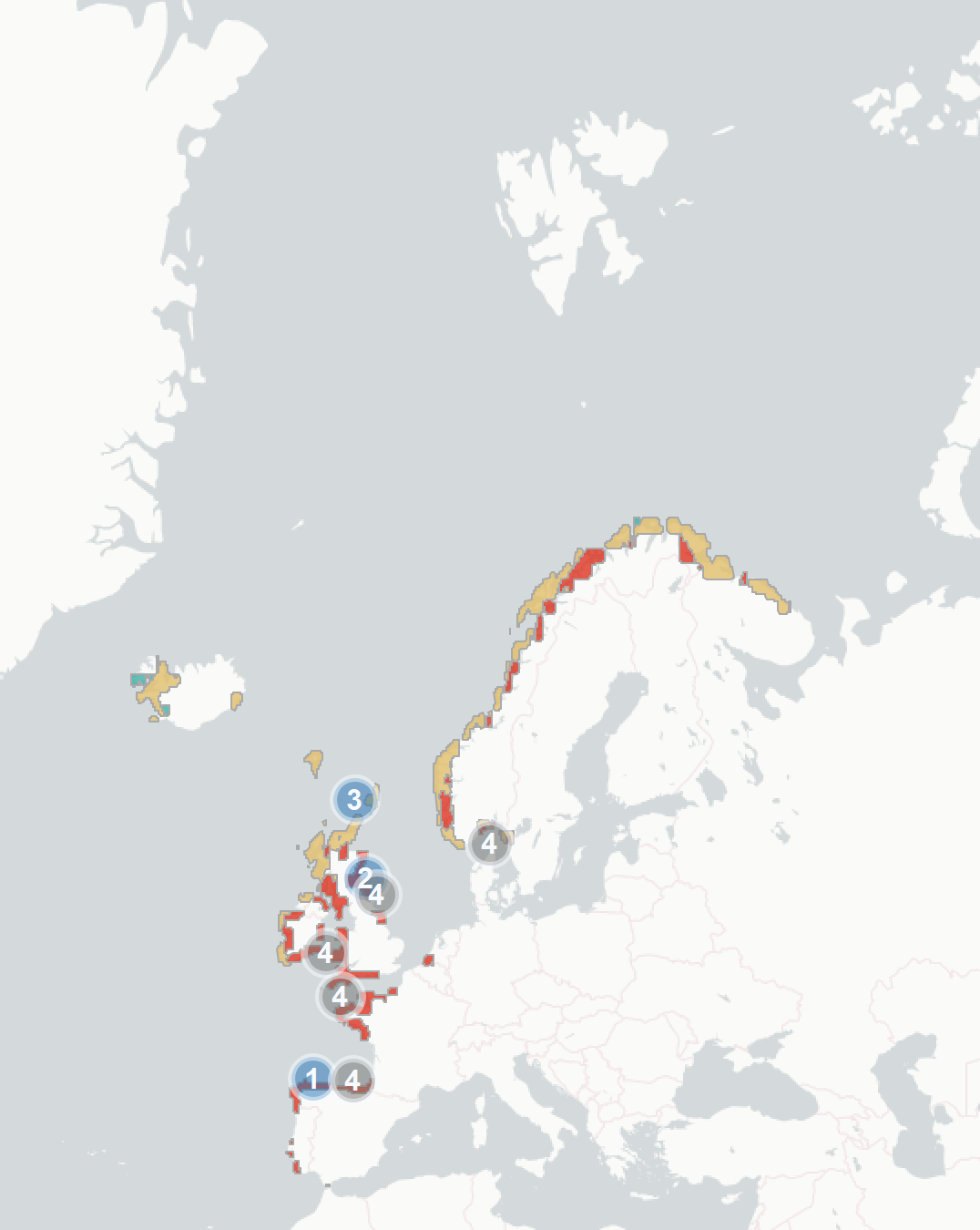European Shag (Gulosus aristotelis): vulnerability to climate change
Evidence for exposure
Potential changes in breeding habitat suitability:
-
Current breeding area that is likely to become less suitable (44% of current range)
-
Current breeding area that is likely to remain suitable (50%)
-
Current breeding area that is likely to become more suitable (6%)
Current impacts to European Shags attributed to climate change:
-
Neutral Impact: Shags have advanced their laying date, most likely due to changes in marine and terrestrial temperatures and subsequently in prey availability
-
Neutral Impact: The diet composition of shags has changed a great deal, likely in response to climate change driven changes in the marine ecosystem
-
Negative Impact: Recent declines in shag populations because of high adult mortality are most likely because of severe winter storms. While individual extreme weather events are difficult to attribute to climate change, the frequency and severity of extreme weather events is likely increasing.
Predicted changes in key prey species:
-
Key prey species are likely to decline in abundance in the Irish Sea, the north-east coast of the UK, the northern coast of Spain and along the coast of Brittany
Sensitivity
-
Shags are sensitive to extreme weather events, including strong on-shore winds and high rainfall. Shags only have partially water-proof feathers, and as such are prone to water-logging and hypothermia in wet, cold weather. Extreme events often result in wide-scale mortality (‘wrecks’) and breeding failure, as such predicted increases in storm frequency and intensity could have severe impacts on shags.
-
When food is plentiful shag populations also often recover quite quickly, and so often follow a “boom and bust” cycle. This may be helpful in response to climate change as populations can recover quickly, but also makes them sensitive to rapid change as populations can become locally extinct quickly.
-
While in many populations shags have a varied diet, in others they are heavily dependent on sandeels, saithe or herring. Previous decreases in prey species have led to lower breeding success. For some populations, any change to key prey availability due to climate change could have severe consequences.
-
Shags typically nest on low-lying habitat, often only a few metres from the water-line, which are vulnerable to flooding and being washed away. Sea-level rise or an increase in wave action during the breeding season could have significant impacts on breeding colonies.
-
Many shag populations heavily rely on kelp forest habitats, especially during the breeding season. Many kelp forests known to be important to shags are either declining due to climate change or are likely to be very vulnerable to climate change. So far, the impact of the decline in kelp forests on shags is unknown, but is potentially severe.
-
Shags are likely to be sensitive to heatwaves, as they are commonly observed gular fluttering on hot days, and absorb heat very effectively. Other species of shags are known to be impacted by heatwaves, which cause poor breeding seasons and increased mortality. Heatwaves are likely to become more frequent and extreme due to climate change.
-
The species has a large range, a large population size, but is declining in many parts of its range. The causes behind these declines are not well understood, but climate change and extreme weather events are one likely cause.
Adaptive capacity
-
Shags are known to change their phenology, probably in correlation to resource availability. This is likely to buffer some effects of climate change as shags may change breeding timing to match prey availability.
-
Foraging strategy and behaviour varies substantially across populations and individuals. In general shags are flexible and generalist in terms of prey and foraging habitat, but individuals are often specialised.
